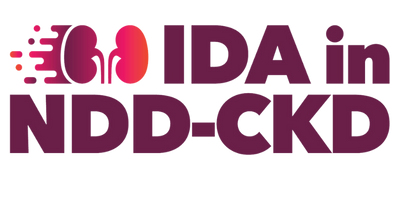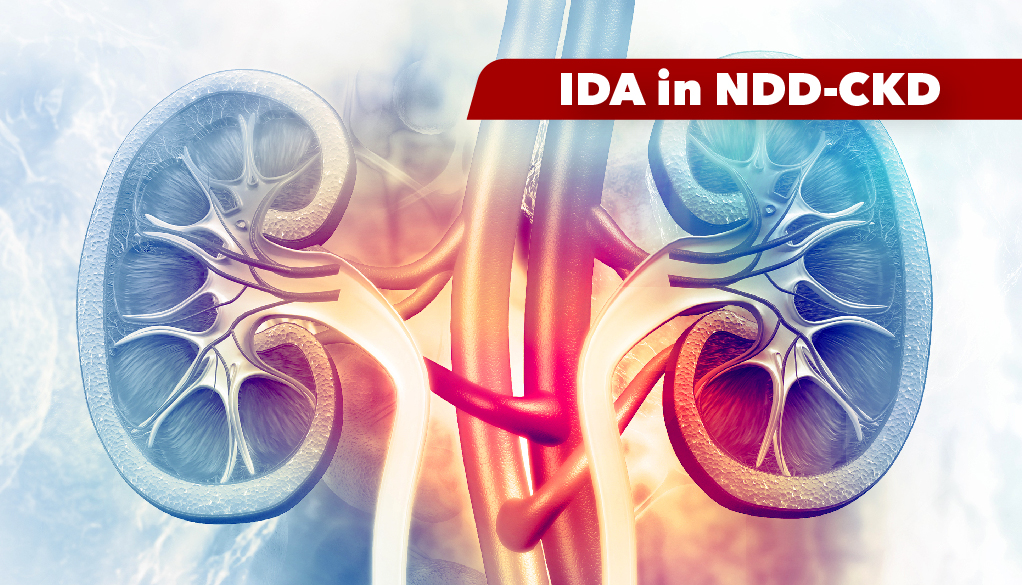FIND-CKD STUDY: IV FERRiC CARBOXYMALTOSE VS ORAL IRON
The optimum iron therapy regimen in patients with non-dialysis-dependent chronic kidney disease (NDD-CKD) is poorly established.1 Ferinject® assessment was an open-label, multicenter, randomized trial in patients with iron deficiency anemia (IDA) and NDD-CKD (FIND-CKD).1 A total of 626 patients with NDD-CKD, anemia, and iron deficiency (ID) who were not taking erythropoiesis-stimulating agents (ESAs) participated.1 Intravenous (IV) ferric carboxymaltose (FCM), aiming at a higher (400–600 g/L) or lower (100–200 g/L) ferritin level, or oral iron treatment were given to patients in a 1:1:2 randomization.1 The primary end point was time to initiation of other therapies including an ESA, other iron medication, or a blood transfusion, or hemoglobin (Hb) trigger of two consecutive values 10 g/dL during weeks 8–52.1 In the high-ferritin FCM, low-ferritin FCM, and oral iron groups, the primary end point occurred in 36 patients (23.5%), 49 patients (32.2%), and 98 patients (31.8%), respectively.1
When compared to oral iron, high-ferritin FCM increased Hb more, and a higher percentage of patients experienced an increase in Hb of more than 1 g/dL.1 All groups experienced equal rates of adverse events including severe adverse events.1 In contrast to oral iron, IV FCM aiming for a ferritin of 400–600 g/L quickly reached and maintained Hb levels, delaying or reducing the need for alternative therapy for anemia, such as ESAs.1 No renal damage was noted within the trial’s constraints, and there was no change in cardiovascular or infectious events.1
REPAIR-IDA TRIAL: IV DOSE AND FREQUENCY COMPARISONS
Parenteral iron supplementation is commonly necessary for IDA in NDD-CKD, although current treatments frequently call for several administrations.2 In patients with IDA and NDD-CKD, the effectiveness and cardiovascular safety of FCM, a non-dextran parenteral iron enabling large single-dose infusions, was compared to iron sucrose.2 A total of 2584 participants were randomly assigned to receive either two doses of FCM 750 mg given over the course of one week or iron sucrose 200 mg given as up to five infusions over the course of 14 days.2 The mean change in highest Hb from baseline to day 56 served as the primary efficacy endpoint.2 All-cause mortality, nonfatal myocardial infarction, nonfatal stroke, unstable angina, congestive heart failure, arrhythmias, and hyper- and hypotensive events were all primary composite safety endpoints.2
In the FCM group, the mean Hb increase was 1.13 g/dL, whereas in the iron sucrose group, it was 0.92 g/dL.2 With the exception of Stage 2 CKD, similar results were seen across all subgroups.2 The number of participants who experienced a Hb increase of 1.0 g/dL between day 56 and baseline was higher in the FCM group (48.6 versus 41.0%).2 Regarding the primary composite safety endpoint, encompassing the major adverse cardiac events of mortality, myocardial infarction, or stroke, there was no meaningful difference between FCM and iron sucrose recipients.2 The FCM group showed a statistically significant difference in the frequency of protocol-de ned, mostly temporary hypertensive episodes.2 This study demonstrates that in patients with NDD-CKD and IDA, two 750-mg FCM infusions are a safe and effective alternative to multiple lower-dose iron sucrose infusions.2
HIF-PHD INHIBiTORS IN NDD-CKD
In patients with both dialysis-dependent (DD) and NDD-CKD, hypoxia-inducible factor prolyl hydroxylase inhibitors (HIF-PHIs) effectively raised Hb levels, according to phase 2 and phase 3 clinical investigations.3 Nevertheless, clinical trials have not consistently shown that HIF-PHIs have an impact on iron control.3 To assess the effects of six HIF-PHIs on iron regulation in patients with NDD-CKD, a systematic review and meta-analysis of randomized controlled trials was conducted.3 From commencement through April 20, 2020, electronic databases were searched for relevant studies.3 The inverse-variance method was used to analyze changes from baseline in the levels of iron, ferritin, hepcidin, TSAT, and TIBC.3
The included studies’ meta-analysis revealed that in patients with NDD-CKD, HIF-PHIs decreased TSAT, ferritin, and hepcidin, raised TIBC and did not influence blood iron despite increased erythropoiesis.3 According to this study’s comprehensive evaluation, HIF-PHIs promote patients with NDD-CKD to utilize iron.3 This is significant because HIF-PHIs are linked to elevated transferrin levels and TIBC, which lower TSAT.3 Thus, the decrease in TSAT following HIF-PHIs should not be construed as ID.3
EFFECTS OF IV IRON ON OXIDATiVE STRESS AND INFLAMMATION
Even though ID affects patients with CKD frequently and negatively impacts their quality of life and disease course, current recommendations do not support treating ID without anemia in this patient population.4 There are questions about how IV iron can affect oxidative stress, inflammation, and endothelial function.4 The effects of a single dose of IV iron versus a placebo on indicators of oxidative stress, inflammation, and endothelial function in non-anemic iron deficient patients with CKD (serum ferritin 100 g/L and/or TSAT 20%) were investigated.4 A total of 54 participants were randomized to receive ferric derisomaltose (FDM) or a placebo.4
When compared to placebo, FDM was linked with a non-significant cant drop in mean F2-isoprostane and no effect on thiobarbituric acid reactive chemicals.4 Inflammatory indicators showed no effect.4 At the 1-month and 3-month follow-ups, the IV iron group showed a slight but statistically significant increase in E-selectin.4 These findings imply prolonged oxidative stress or inflammation are not brought on by the administration of FDM to iron-deficient patients with CKD who are not on dialysis.4 To assess the advantages of IV iron administration in this patient population, larger studies are necessary.4


